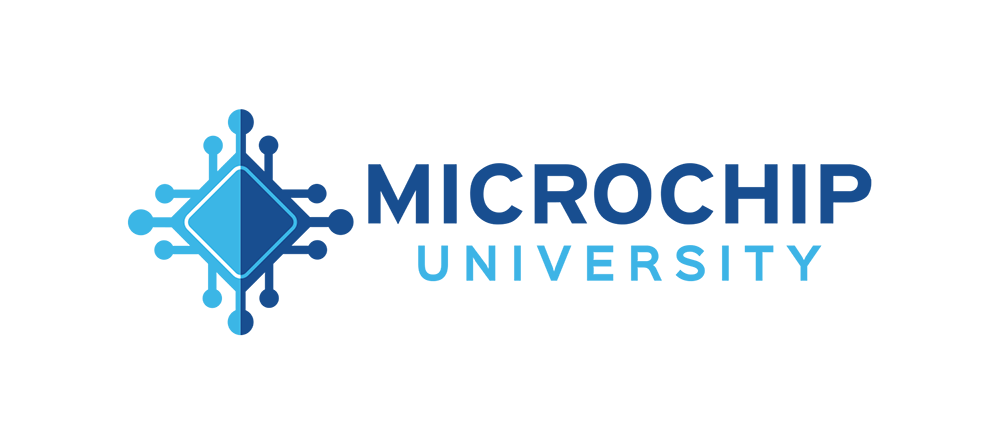Low Power, Segment LCD, USB, Secure IoT, Safety, Sensor Interfacing
PIC24F GU/GL/GP Family Selection Guide
For more information on each of the PIC24F GU, GL and GP products, click the “Sub-Family” name in the table below.
Standard Key Features: UART, I2C, SPI, Timers, WDT, PWMs, IC/OC, PPS, Comparators
Featured Core Independent Peripheral: LCD with Autonomous Animation
Most display applications involve a few common animations like blinking, periodically alternating between displays and blanking of pixels. By using the integrated LCD driver with autonomous animation, you can offload most of these animation routines from the CPU. This allows you to enable animation in power-saving modes while the CPU is in doze, idle or sleep mode.
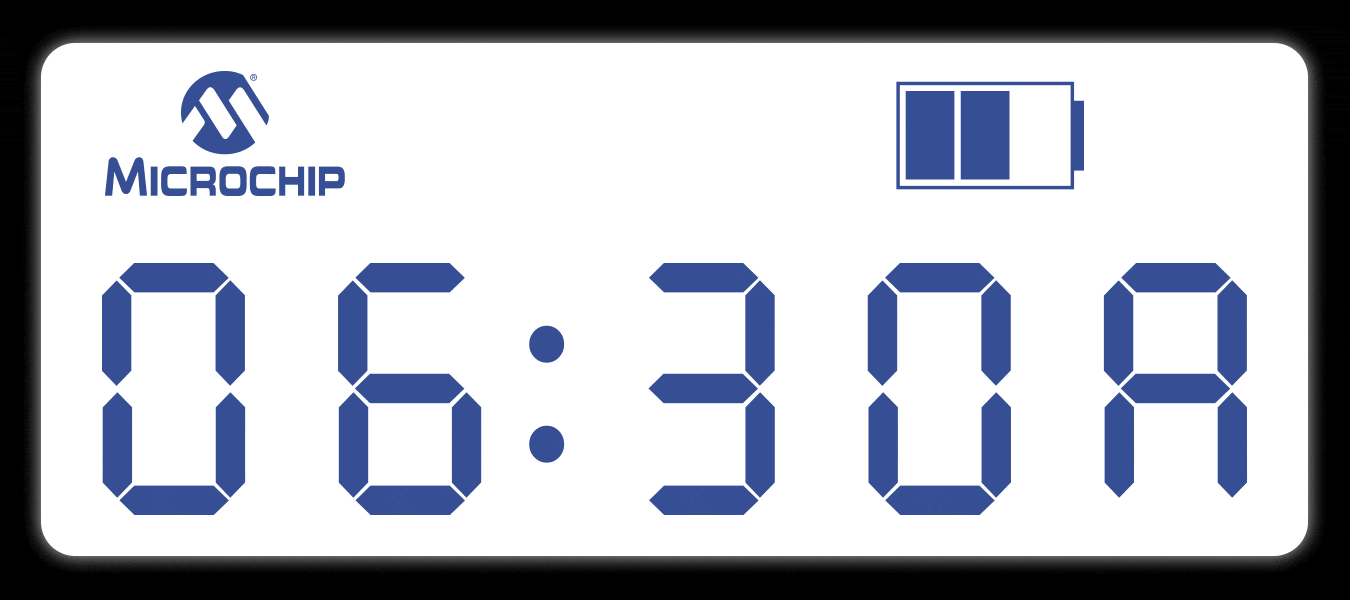
Autonomous Blinking
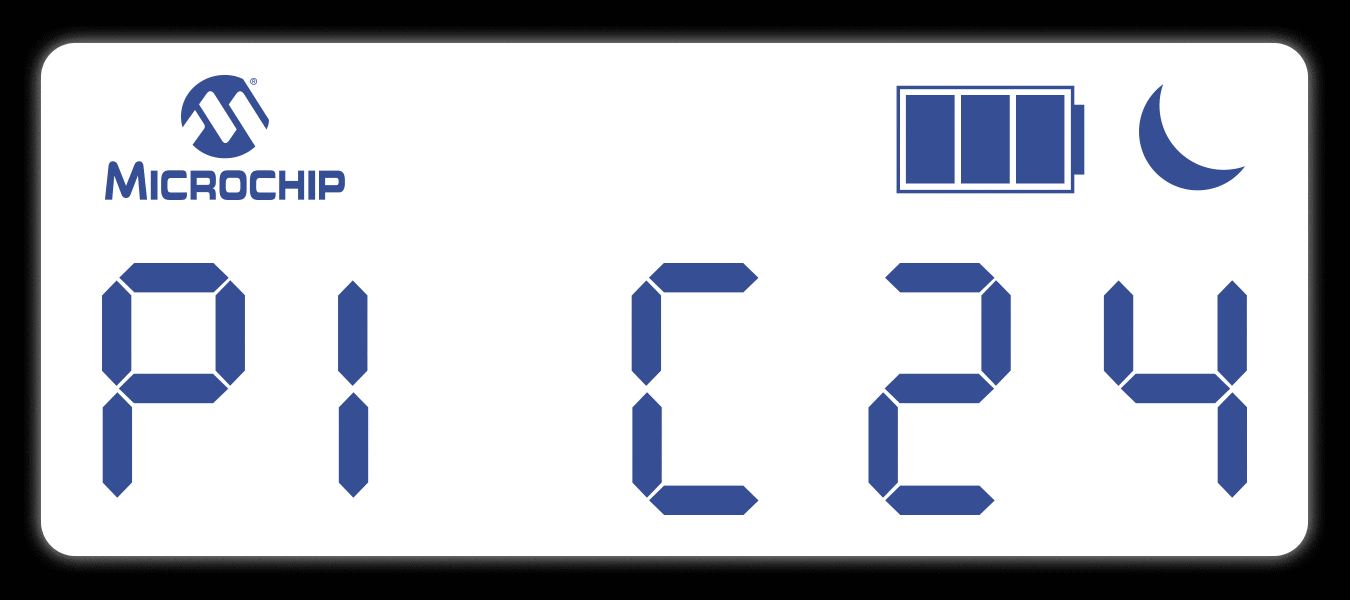
Alternating Display
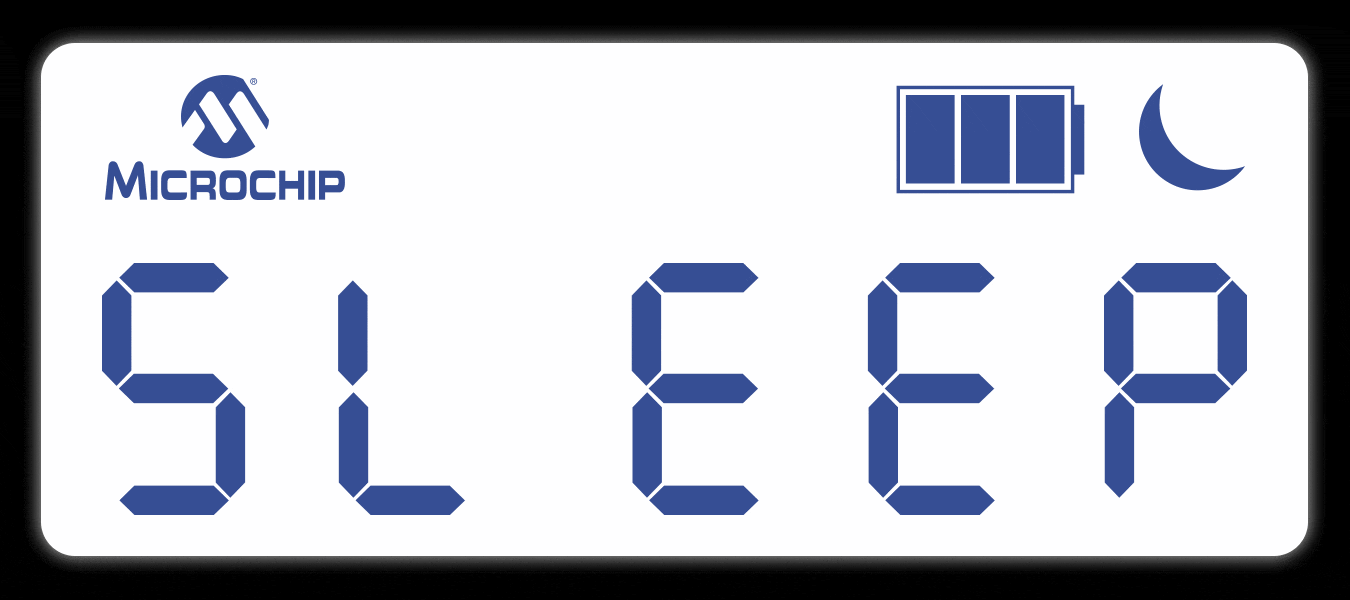
Animation in Low-Power Modes
Quickly Design a Display Interface with MPLAB Code Configurator (MCC)
Reduce your display design time to minutes with the help of MCC. It eliminates the meticulous and time-consuming task of mapping the pins and segments and allows you to import display icons to easily customize your display design.
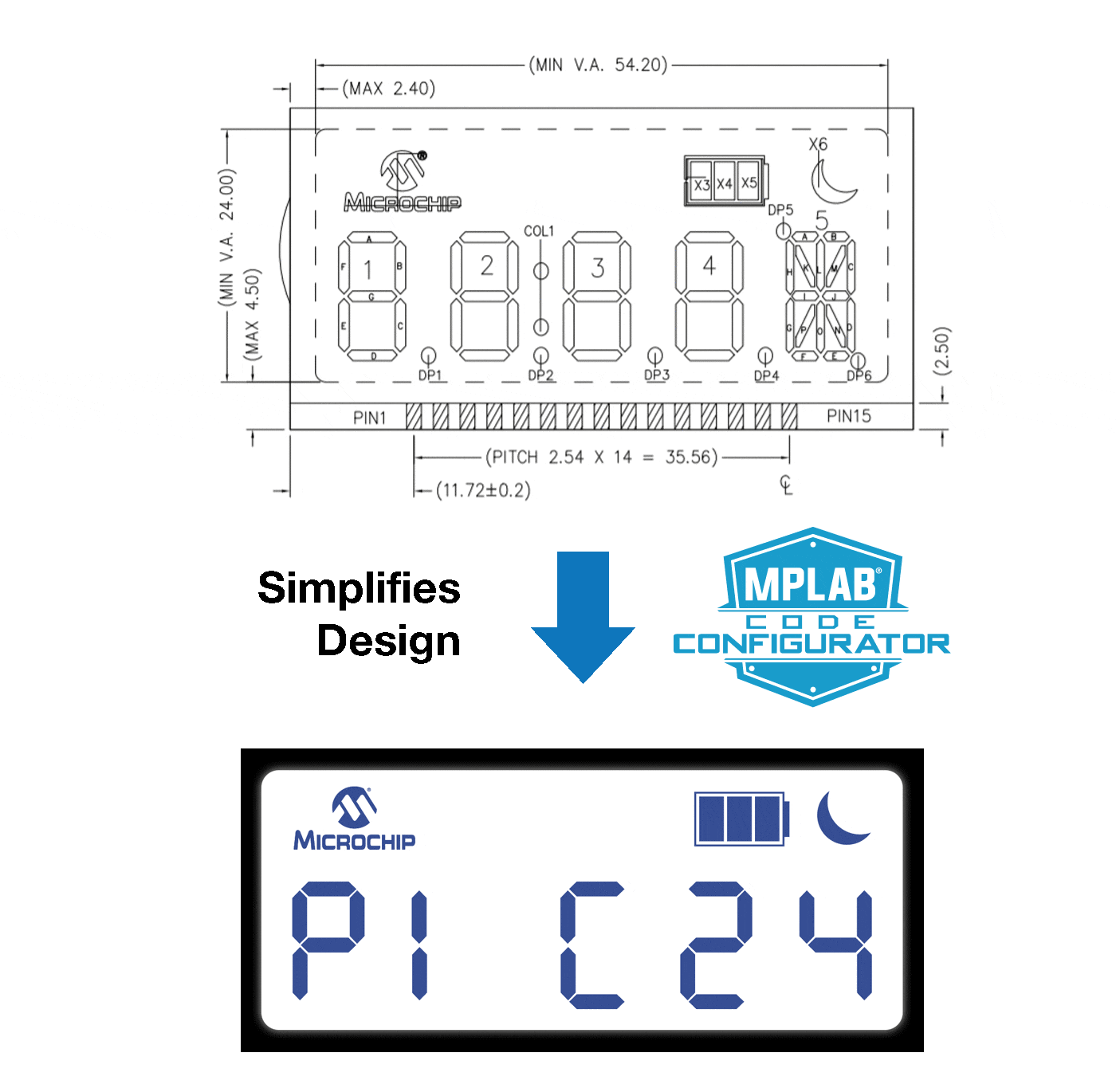
Target Applications
Displays
- Automotive clusters
- Thermostats
- Measurement units
- Power and flow meters
- Medical devices
- Appliances
Secure IoT
- Smart sensors
- In-home displays
- Wearables and fitness monitors
- Connected appliances
- Medical devices
Harsh Environments
- Automotive and industrial sensors
- Industrial monitors
- Fault detectors
- Industrial control and automation
Low Power
- Handheld devices
- Remote portable sensors
- Battery-powered devices
Easily Implement VBAT Low-Power Operation
Do you need to conserve energy and implement a secondary power source to keep the state machine or RTCC value intact in your application? Find out how you can leverage the PIC24F family’s core-independent features to emulate VBAT functionality with minimal core intervention using a just few external components.
Seamlessly Migrate from PIC24F GA3 Family
If you have been using an earlier PIC24F GA3 device, it’s easy to add the advanced features available in the PIC24F GL3 family to your latest design. Our migration guide will help you make the transition without any hassles.
MPLAB® Development Ecosystem and Software Tools
The MPLAB development ecosytem is a single tool chain supporting all PIC® microcontrollers.
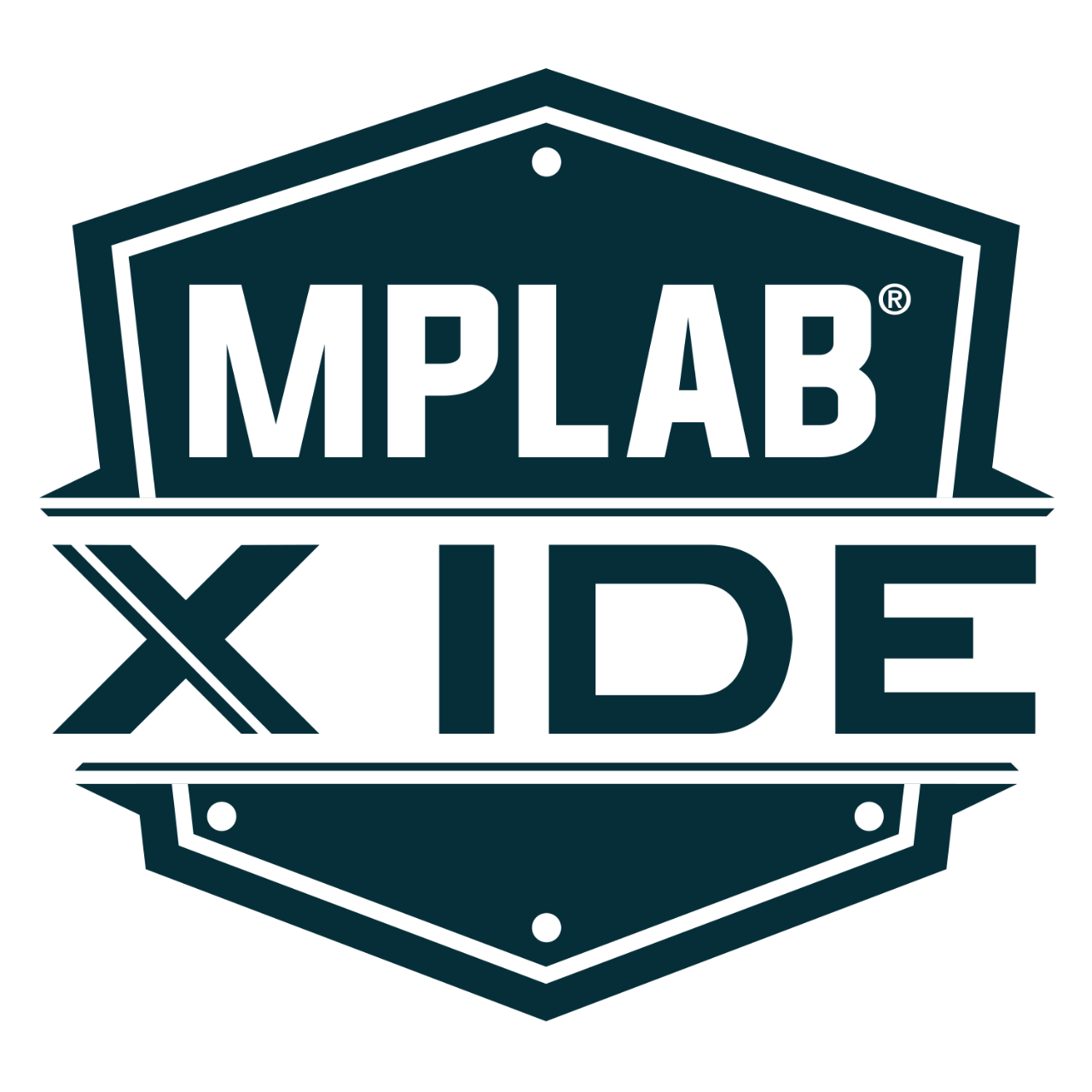
MPLAB® X Integrated Development Environment
A single Integrated Development Environment (IDE) supporting all PIC MCUs
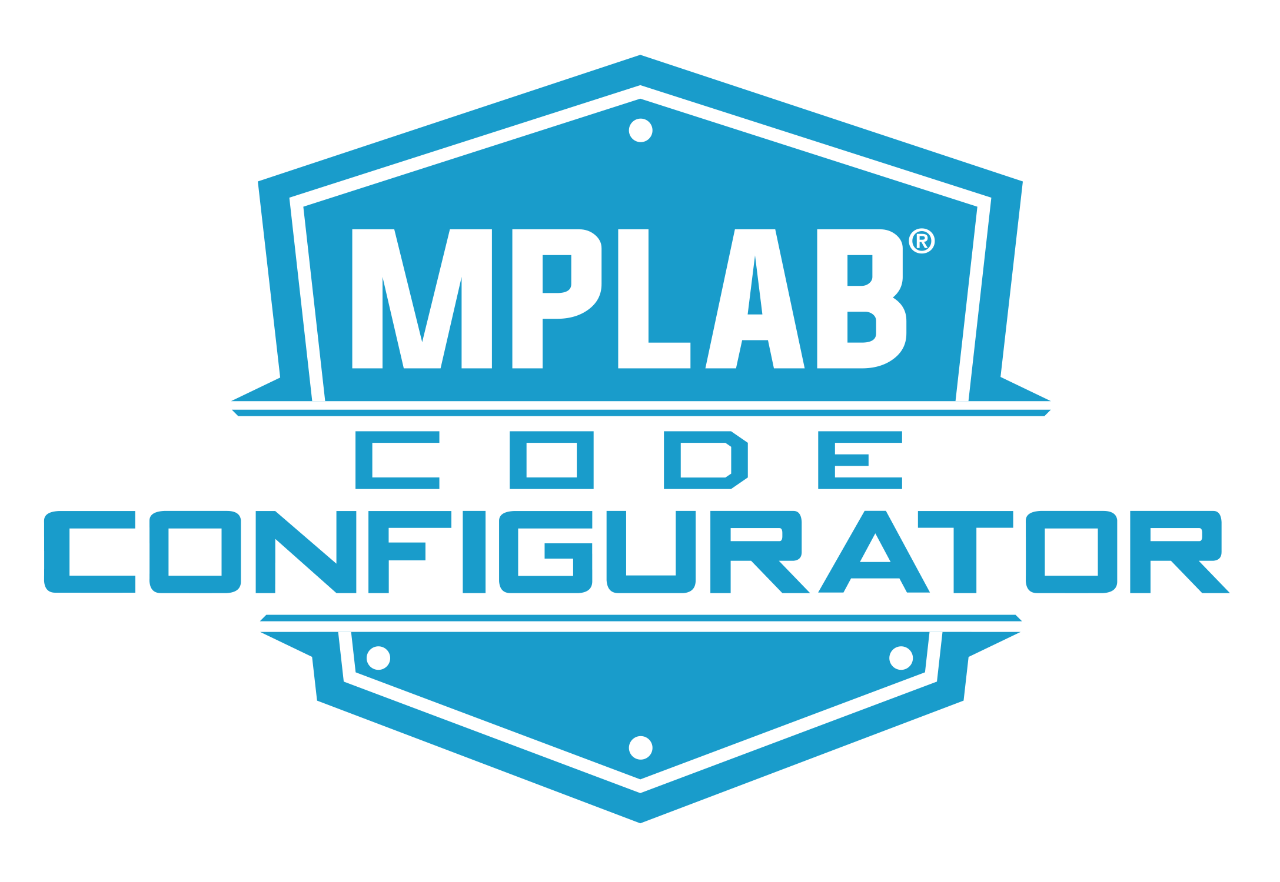
MPLAB® Code Configurator
A free graphical programming environment that generates seamless, easy-to-understand C code
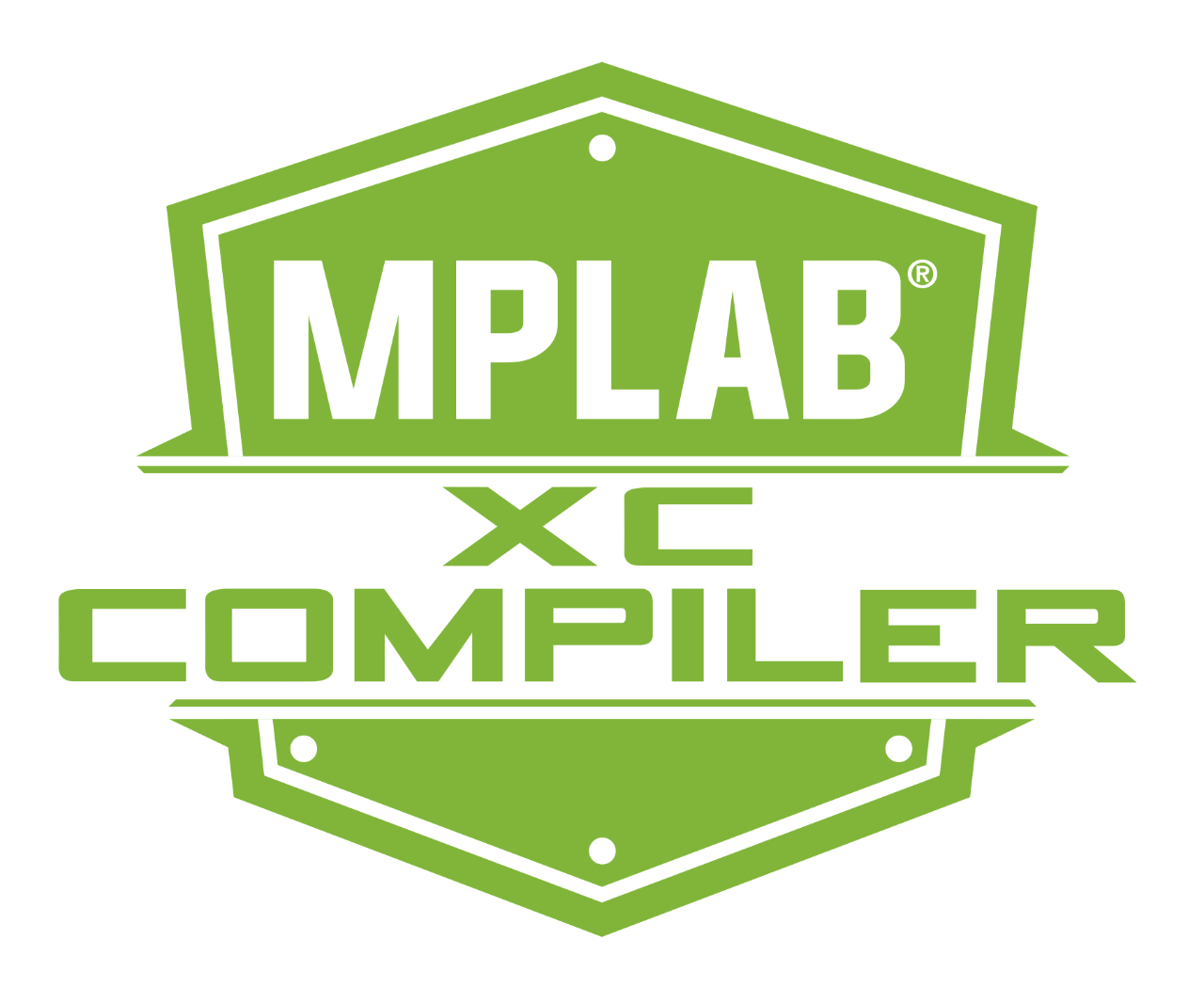
MPLAB® XC Compiler
A comprehensive solution for your software development that integrates with MPLAB X IDE to provide a full graphical front end
A few of our most popular hardware development boards available for the PIC24 products are shown below. To learn more about various development boards, please visit the Hardware Development Tools page.

PIC-IoT Development Boards
Simple and effective way to connect your embedded application to Google Cloud or AWS platform

Explorer 16/32 Development Kit
Ready-to-start development, demonstration and testing platform for PIC24 MCUs and dsPIC® DSCs.

PIC24F LCD and USB Curiosity Boards
Cost effective development and demonstration platform for the PIC24F GU/GL family of MCUs

PIC24FJ64GU205 Curiosity Nano Development Board
This board provides an easy-to-use development platform for PIC24F MCUs with integrated USB and CIPs.
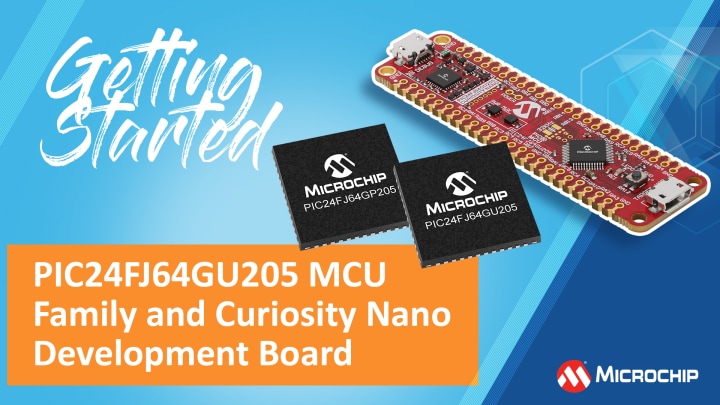
PIC24FJ64GU205 MCU Family and Curiosity Nano Development Board
This video introduces the PIC24FJ64GU205 family of eXtreme Low Power (XLP) microcontrollers and the PIC24FJ64GU205 Curiosity Nano Development Board.

Data EEPROM Emulation on PIC24 MCUs Using MPLAB® Code Configurator
Learn how to configure and use the Data EEPROM Emulation (DEE) library using MPLAB® Code Configurator (MCC).
The program Flash available on PIC24F MCUs and dsPIC33C DSCs can be easily used to emulate EEPROM while the abstract wear-leveling complexities are handled by the DEE library in MCC.

PIC24 MCUs: Easy Migration in a Platform Design
This video introduces you to the common development ecosystem that enables you to use low-power PIC24F MCUs and robust dsPIC33 DSCs in a complete platform design and demonstrates easy migration across device families.

MCC 16-bit Bootloader for PIC24 MCUs and dsPIC33 DSCs
MCC 16-bit Bootloader for PIC24 MCUs
Learn how, in just a few simple steps, MPLAB® Code Configurator (MCC) enables adding a bootloader to your PIC24 MCU and dsPIC33 DSC based applications and helps reduce your design time, future proof your products and reduce your risks.

New PIC24F GU/GL Family of Low Power MCUs
PIC24F GU/GL Family of Low Power MCUs
The PIC24F ‘GU/GL’ family of eXtreme Low Power (XLP) microcontrollers (MCUs) enables the development of an array of innovative applications, both with and without displays. Packed with many Core Independent Peripherals (CIPs) that can function in power-saving modes, these MCUs offer ultra-low-power operation for battery-powered and power-conscious IoT designs.

Migrating from 8-bit to 16-bit Microcontrollers and Digital Signal Controllers: Some Considerations
Migrating from 8-bit to 16-bit Microcontrollers: Some Considerations
We provide an extensive product portfolio of 8-, 16- and 32-bit microcontrollers and Digital Signal Controllers to help you select the device that best suits the needs of your application.If you need to expand or even downsize your application to add, optimize or otherwise modify your design, this video discusses some key considerations when migrating between our 8- and 16-bit microcontroller and Digital Signal Controller product portfolios.

PIC-IoT WG Development Board
PIC-IoT WG Development Board
This video provides an overview of the PIC-IoT WG Development Board. This board was designed to be extremely easy to use, secure and low power. With this device, you will be able to connect your IoT node to the internet in 30 seconds or less.
Download MPLAB® X IDE: www.microchip.com/mplabx

Setup CAN in Minutes using MPLAB® Code Configurator
Set up CAN in Minutes Using MPLAB® Code Configurator
This video will demonstrate the basic setup of CAN peripherals available on PIC24 MCUs and dsPIC33 DSCs using MPLAB® Code configurator.
Links for more information:
